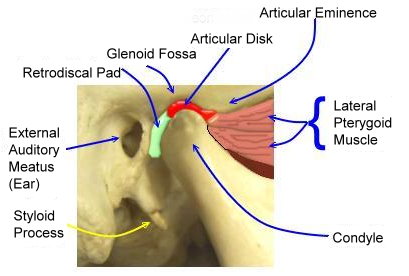We grateful to the late Dr. Daniel Laskin, Adjunct Clinical Professor and Chairman Emeritus at Virginia Commonwealth University School of Dentistry, Oral and Maxillofacial Surgery, for summarizing this article.
Many dental practitioners continue to use radiographic or magnetic resonance imaging (MRI) findings in the temporomandibular joint (TMJ) as the sole m eans of establishing that there is pathology present that requires treatment. These findings include the position of the intra-articular disc in relation to the mandibular condyle, the location of the condyle relative to the glenoid fossa, the depth of the glenoid fossa, and flattening of the condylar surface. In this study the MRIs of two groups of asymptomatic general population individuals differing in age by 20 years were analyzed for these factors.
eans of establishing that there is pathology present that requires treatment. These findings include the position of the intra-articular disc in relation to the mandibular condyle, the location of the condyle relative to the glenoid fossa, the depth of the glenoid fossa, and flattening of the condylar surface. In this study the MRIs of two groups of asymptomatic general population individuals differing in age by 20 years were analyzed for these factors.
 eans of establishing that there is pathology present that requires treatment. These findings include the position of the intra-articular disc in relation to the mandibular condyle, the location of the condyle relative to the glenoid fossa, the depth of the glenoid fossa, and flattening of the condylar surface. In this study the MRIs of two groups of asymptomatic general population individuals differing in age by 20 years were analyzed for these factors.
eans of establishing that there is pathology present that requires treatment. These findings include the position of the intra-articular disc in relation to the mandibular condyle, the location of the condyle relative to the glenoid fossa, the depth of the glenoid fossa, and flattening of the condylar surface. In this study the MRIs of two groups of asymptomatic general population individuals differing in age by 20 years were analyzed for these factors.In both groups, condylar position was characterized by great variability. Whereas those dentists who use condylar position as a criterion of pathology believe that the condyle should be centered in the glenoid fossa, this study found only 49% of the subjects had condyles in that position and, of these, an absolute centric position was present in less than 4%. In females, a posterior position was present in 52%, while in men, 57% were in a centric position. Neither age nor gender had any influence on location of the condyle.
In three-fourths of the subjects the intra-articular disc, described in textbooks as normally having its posterior band at the twelve o’clock position, was in a more forward position. This anterior location was twice as frequent in females as in males, in conjunction with the more common finding of TMJ clicking in women. The depth of the fossa was decreased in both age groups.
Based on the findings in this study, it is evident that eccentric condylar position is not an indicator of an abnormal TMJ and should not be used as a reason for treatment. Moreover, it is clear that one cannot rely solely on imaging evidence of an anteriorly positioned disc as an indicator of joint pathology and that it must be accompanied by clinical symptoms of TMJ pain and/or limitation of jaw movement for this to be considered. Painless clicking alone is also not an indication for treatment. Although the authors did not specifically study changes in the condylar surface, they do discuss this issue and point out that although loss of normal contour and flattening of the condyle may be an indication of osteoarthritis, it also may represent a normal sign of aging and/or adaptive remodeling and require no treatment.
